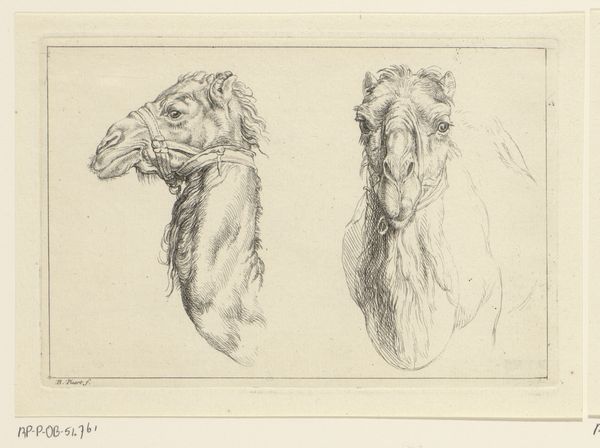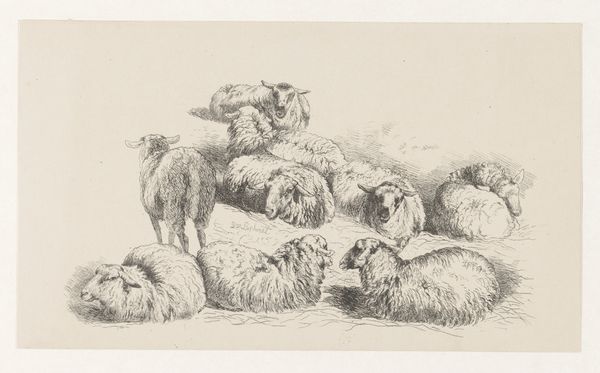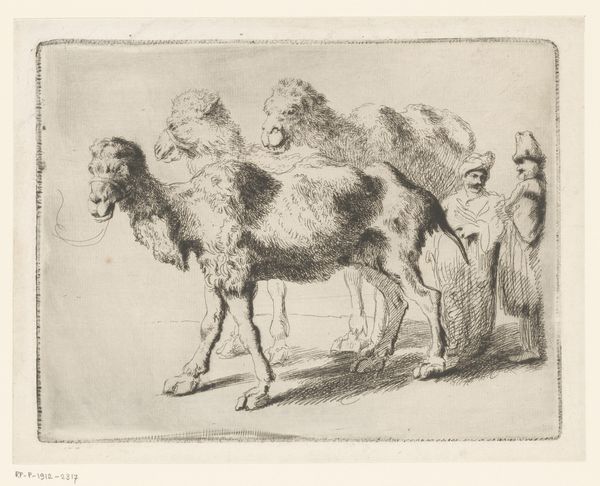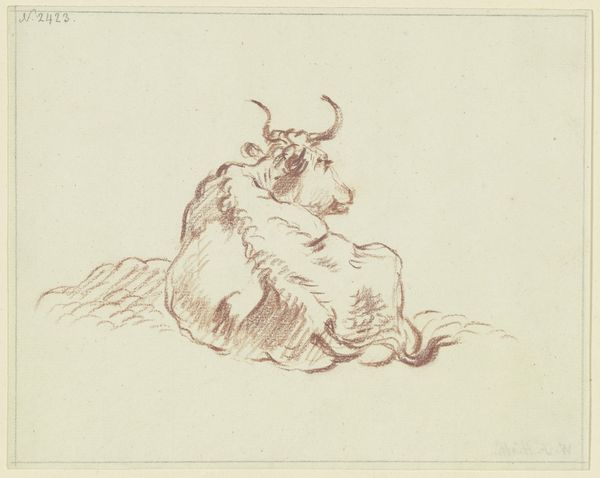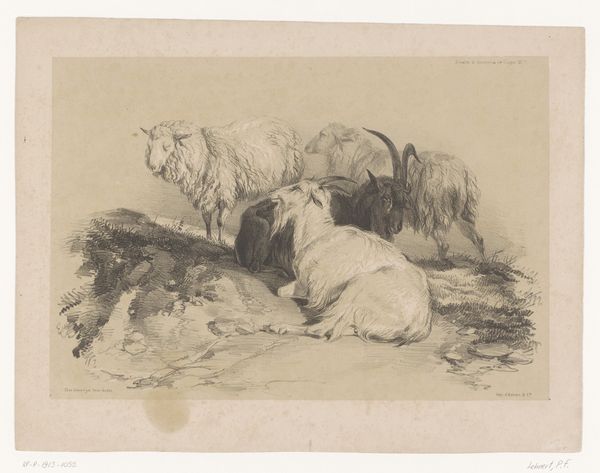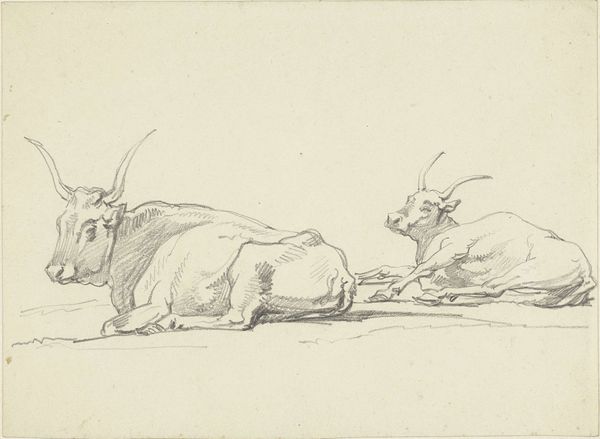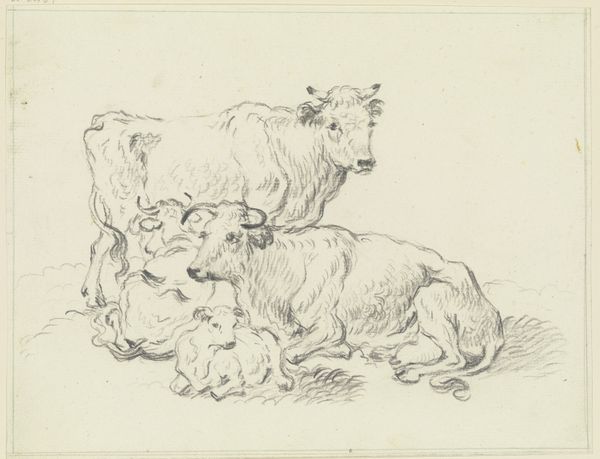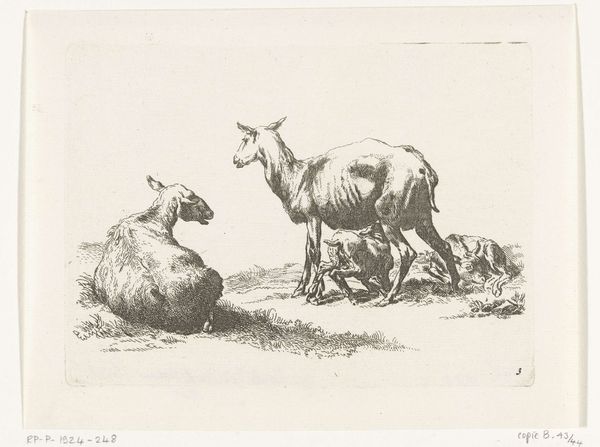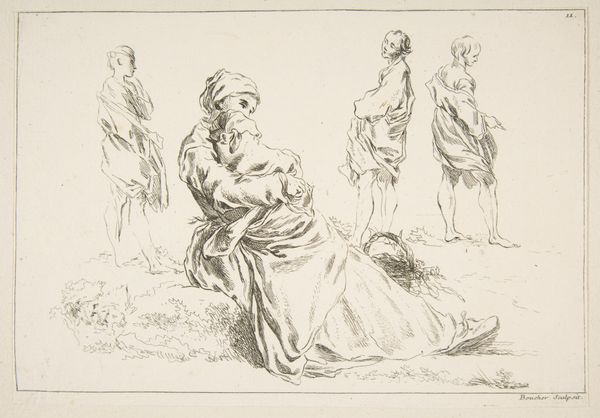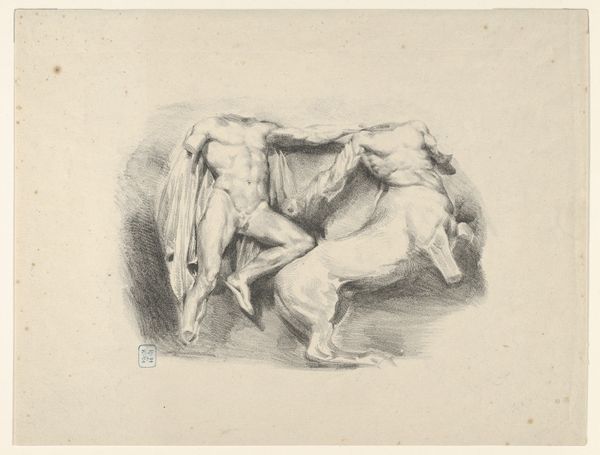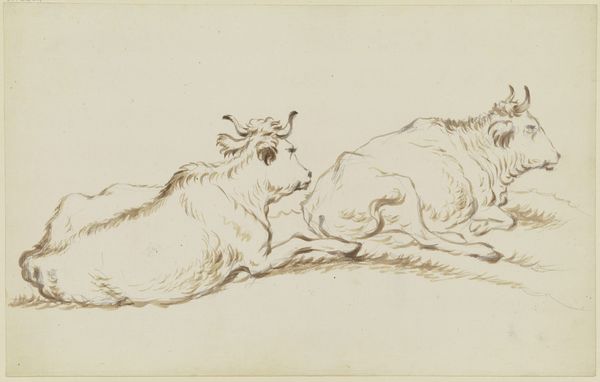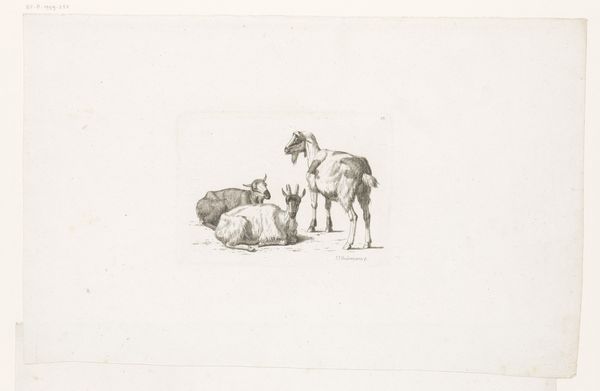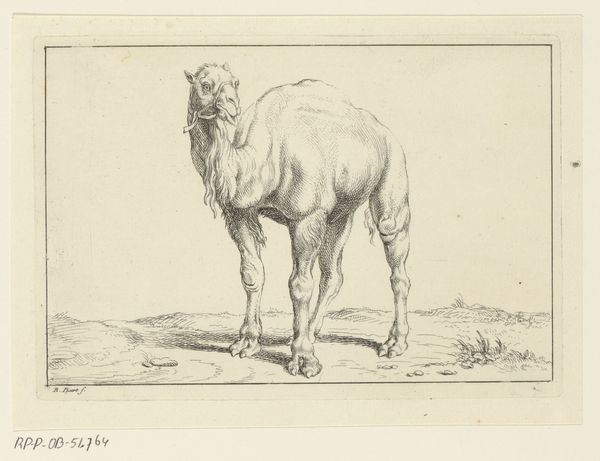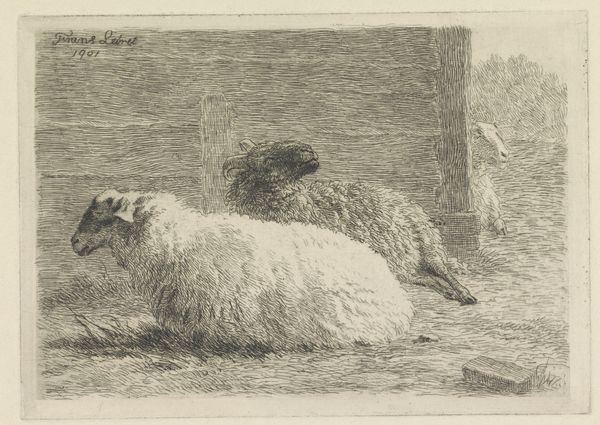
drawing, pencil
#
pencil drawn
#
drawing
#
landscape
#
pencil drawing
#
pencil
#
realism
Dimensions: height 122 mm, width 177 mm
Copyright: Rijks Museum: Open Domain
Curator: This is "Landscape with two resting dromedaries," a pencil drawing made by Bernard Picart, dating somewhere between 1683 and 1733. What strikes you first about it? Editor: There’s a certain weariness in it, don't you think? The way the dromedaries are sitting, heavy and still... and the barren landscape only amplifies that mood of fatigue. Curator: That stillness is quite evocative. It brings to mind the colonial context of that era and the complex symbolism that dromedaries—and other beasts of burden—had come to embody. They are often linked to ideas of trade, exoticism, and, certainly, subjugation. Editor: Yes, those are the symbols the West associated with the Orient. For those who lived in that landscape, the dromedary had a more complex symbolic power. It would have been an intimate part of their cultural memory, linking travel to community, survival, and identity. Curator: Picart, I believe, never actually traveled to the regions where dromedaries were indigenous, which complicates things. The realism in the drawing may be, in reality, another projection from a European worldview, framing the dromedary as 'other.' What appears as a true-to-life representation may actually further marginalize those who share space with such a remarkable animal. Editor: That makes me question my initial perception, or projection, if you will, regarding their weary stillness. Perhaps Picart captured their everyday disposition instead of weariness. It seems his symbols are our burden. Curator: Indeed. It calls into question who has the authority to represent what and how that act of representation has real social and political consequences. The act of assigning a landscape, like "exotic" or "dramatic" can be a symbolic weapon as well. Editor: A seemingly straightforward depiction becomes surprisingly charged. It pushes us to think critically about who is doing the looking, who is being looked at, and what cultural baggage we all bring to that encounter. Curator: Absolutely. There is something to be learned by analyzing our encounters with the historical narratives embedded in images and to address their weight responsibly. Editor: Agreed. A sketch can, in its quiet way, still spark quite the discussion about representation.
Comments
No comments
Be the first to comment and join the conversation on the ultimate creative platform.
